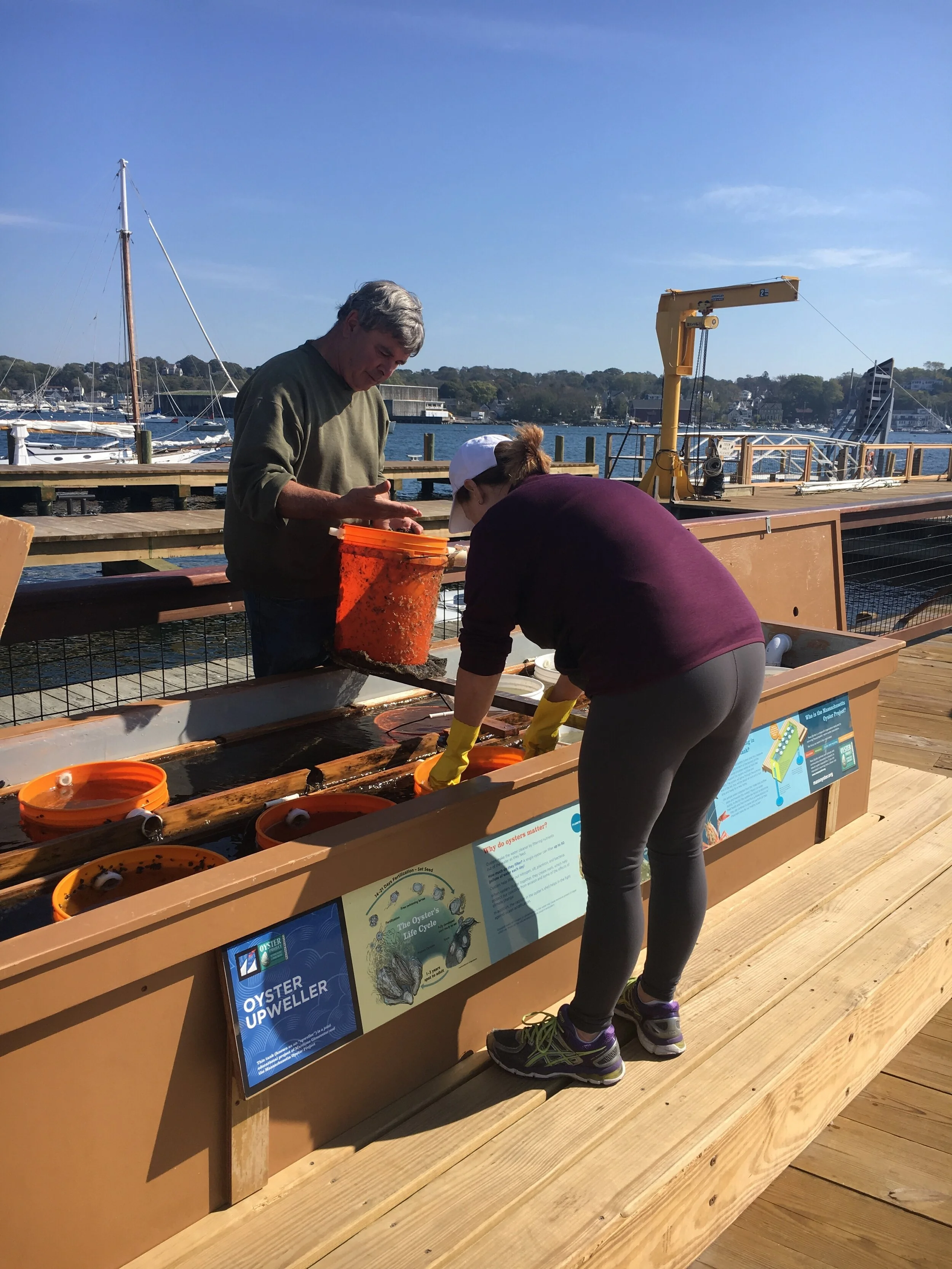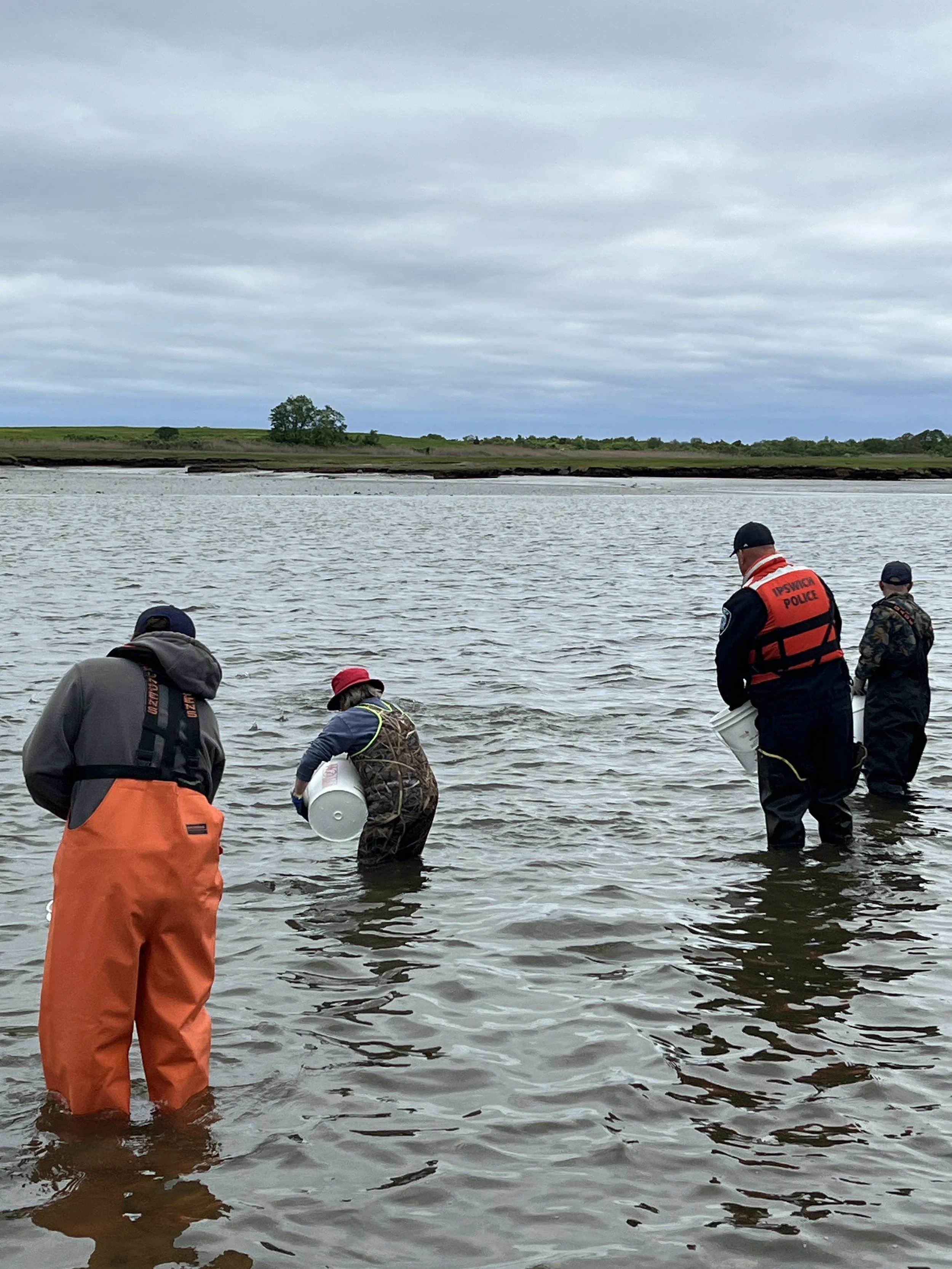
Oyster habitat restoration - from seed to sea
Bringing oyster science into our communities
Our upweller programs are among our most visible throughout the state. These ‘living’ science experiments can be found in public spots along the coast line, often by public piers or boardwalks, demonstrating the role that oysters play in their environment.
-
An upweller is an incubator for baby oysters.
Also known as spat, baby oysters start at about the size of a grain of sand, and grow by consuming nutrients from the water, filtering it in the process. Upwellers accelerate this growth by storing the spat in buckets and pumping water through the buckets. As they grow, the oysters are sorted into different buckets by size so that they grow and consume nutrients at similar rates.
-
Since our program’s inception in 2017, we’ve grown over 1 million oysters, of which more than 950,000 have been transplanted back into Massachusetts’ coastal water.
We currently manage 7 upwellers throughout commonwealth. We start with about 60,000 baby oysters at each upweller in late spring, and manage the upwellers through our volunteer network through the summer and fall.
Our volunteers check on the upwellers every one to two days, sorting the oysters by size, cleaning the upwellers and making sure everything is in working order. At the end of our program, the oysters will have grown to about an inch in size. We then use these oysters for our restoration efforts.
We partner with the Massachusetts’ Department of Marine Fisheries and local town shellfish commissioners to identify suitable locations plant our oysters throughout the state. This includes various locations along Cape Cod, Nantucket, the North Shore and the South Coast.
Interested in volunteering at one of our upwellers? Check out our volunteer opportunities.
-
Upwellers are incredibly valuable for our restoration efforts, providing a safe and nutrient rich environment for oysters to grow.
But beyond their role in our restoration efforts, upwellers can be a great way to raise awareness and educate the community about their local ecosystems. Our upwellers can often be found in high-traffic locations within their communities, and highlight the important role that oysters play in filtering water.
Over 1 million oysters raised
Our upwellers
Our planting sites
How an upweller works
Want to adopt an upweller?
We’re always on the lookout for organizations to sponsor our upweller programs.












